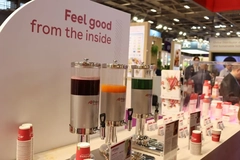Molecular Differences in Biothera ß-Glucans Impact Immune Cell Responses - Research

“As demonstrated in previous research, ‘structure matters’ to ß-glucan binding and initiation of differential immunomodulatory responses,” said William Grossman, M.D., Ph.D., Biothera senior vice president of Research & Development.
6/29/2011 --- New in vitro and in vivo studies of Biothera β-glucans published in the current issue of the journal Blood demonstrate the importance of molecular structure in designing effective immunotherapies, the company announced.
The paper confirms research published in the April issue of Nature that found that differences in yeast-derived β-glucan structures determine their ability to bind to receptors on innate immune cells and the specific immune responses that result.
Biothera’s soluble and particulate β-glucans depend on different receptors to elicit their biological activities. The Dectin-1 pathway is essential for Biothera’s particulate β-glucan to mediate immune modulatory effects on dendritic cell activation, macrophage phagocytosis, and CD4 (TH1) and CD8 (Cytotoxic) T-lymphocyte activation. In contrast, Biothera’s soluble β-glucan is dependent on Complement Receptor binding to elicit neutrophil-mediated responses to antibody targeted cells and does not directly effect T cell activation.
“These data demonstrate how different β-glucan structures affect immunomodulatory mechanisms,” said principal investigator Jun Yan, M.D., Ph.D. of the Department of Medicine, Co-director of Tumor Immunobiology Program, James Graham Brown Cancer Center, University of Louisville School of Medicine in Louisville, Kentucky. “Biothera’s ability to produce and characterize these β-glucan compounds was critical to this research.”
“As demonstrated in previous research, ‘structure matters’ to β-glucan binding and initiation of differential immunomodulatory responses,” said William Grossman, M.D., Ph.D., Biothera senior vice president of Research & Development. “Our commitment to researching the biological mechanisms underpinning the activity of our compounds will lead to even more effective pharmaceuticals and food-grade ingredients.”












